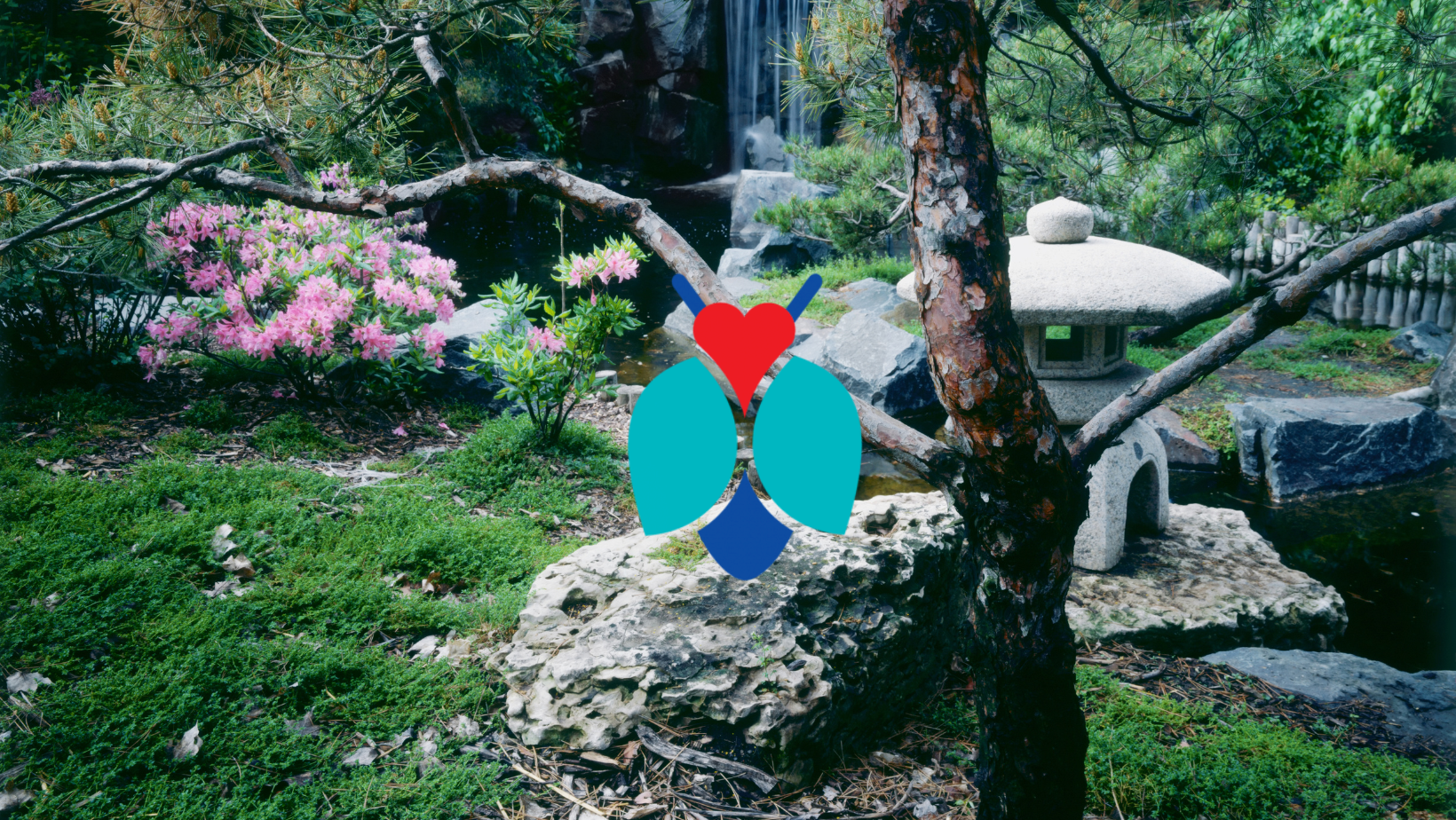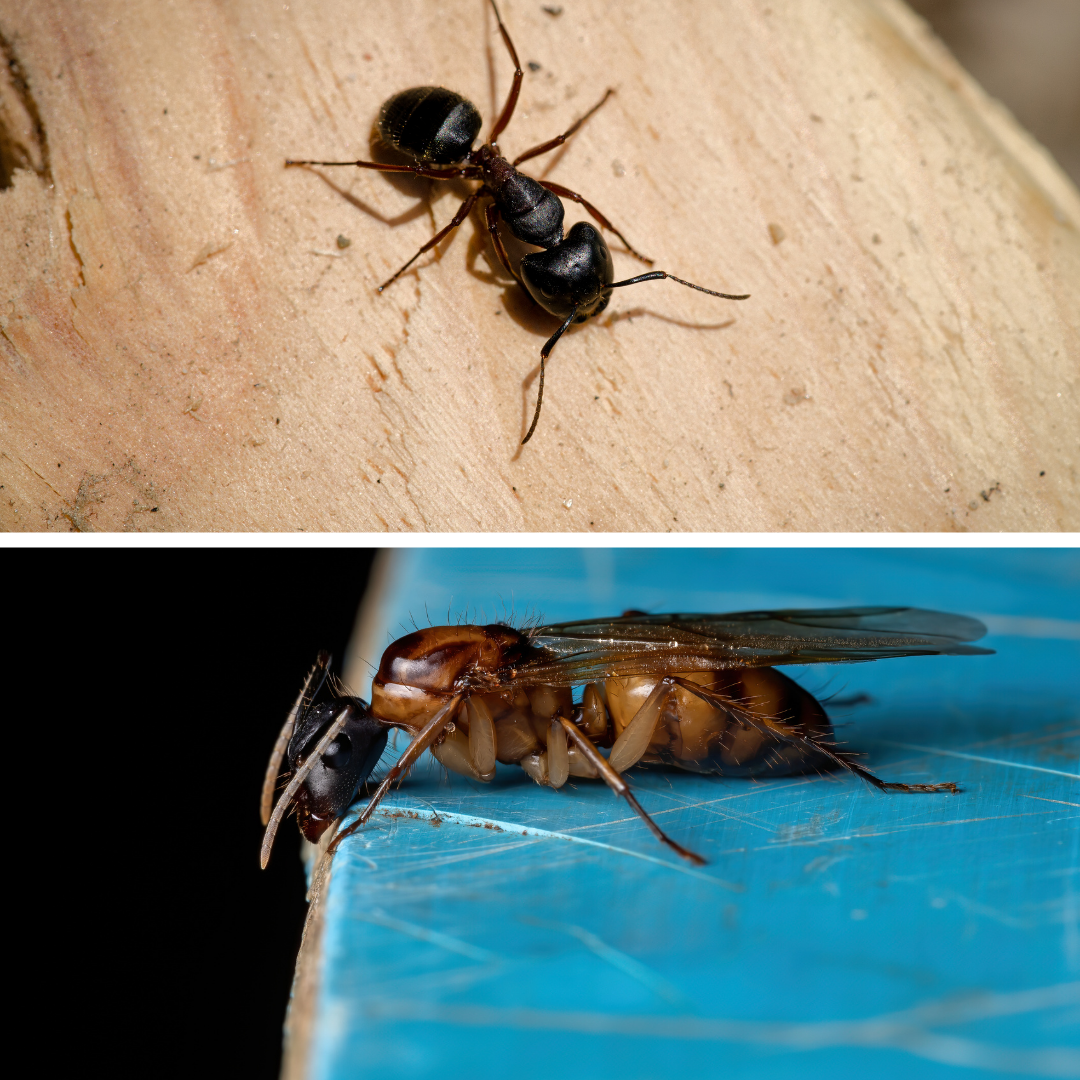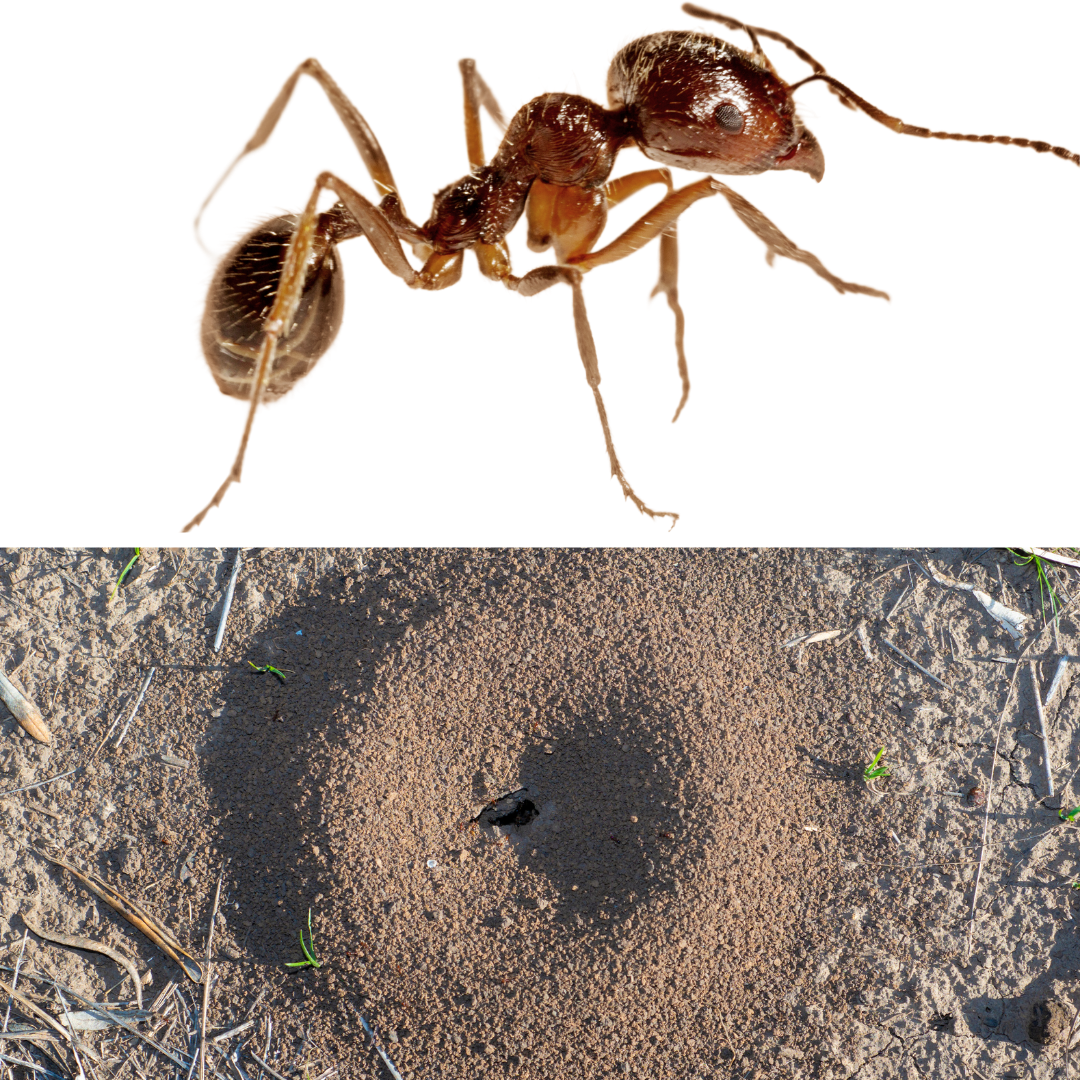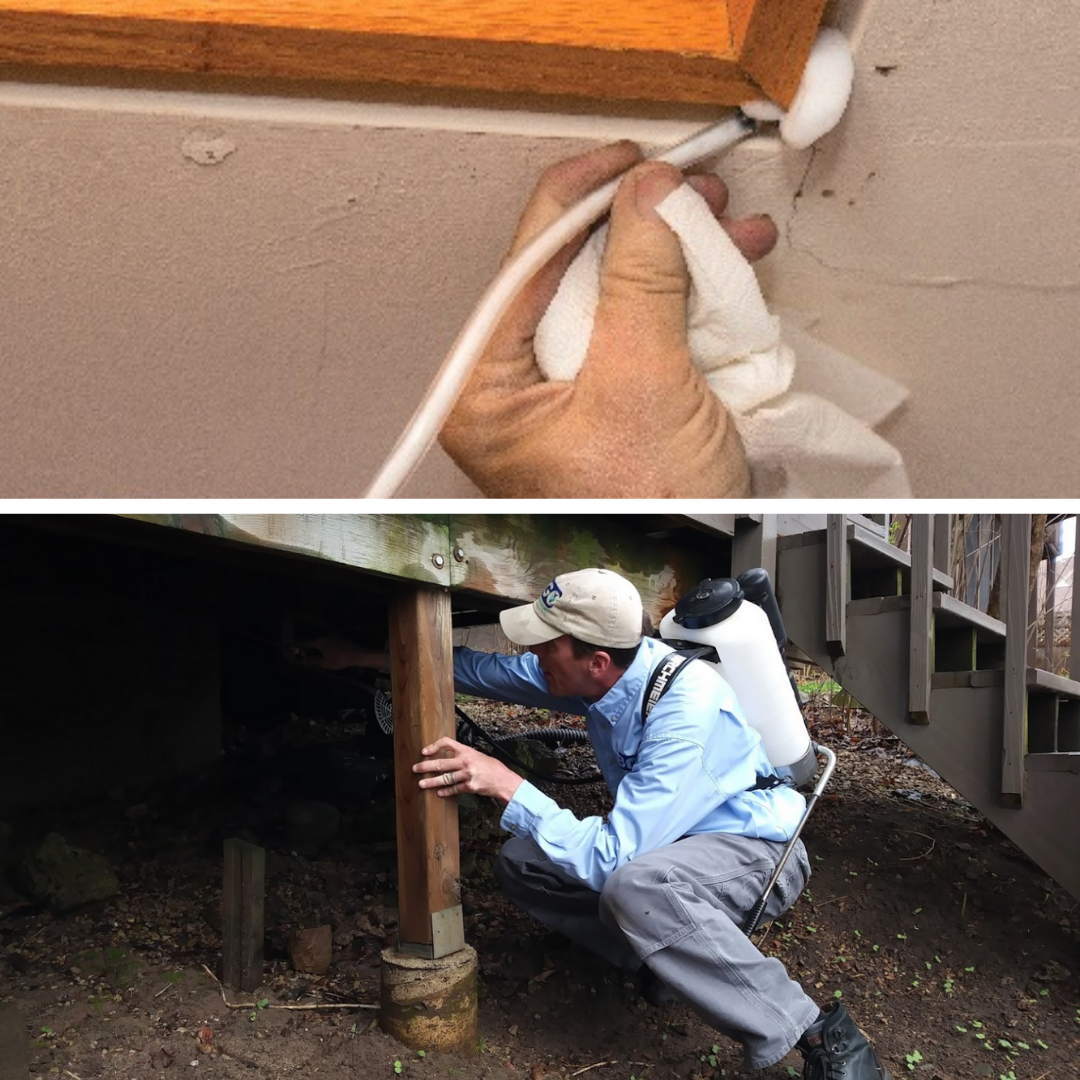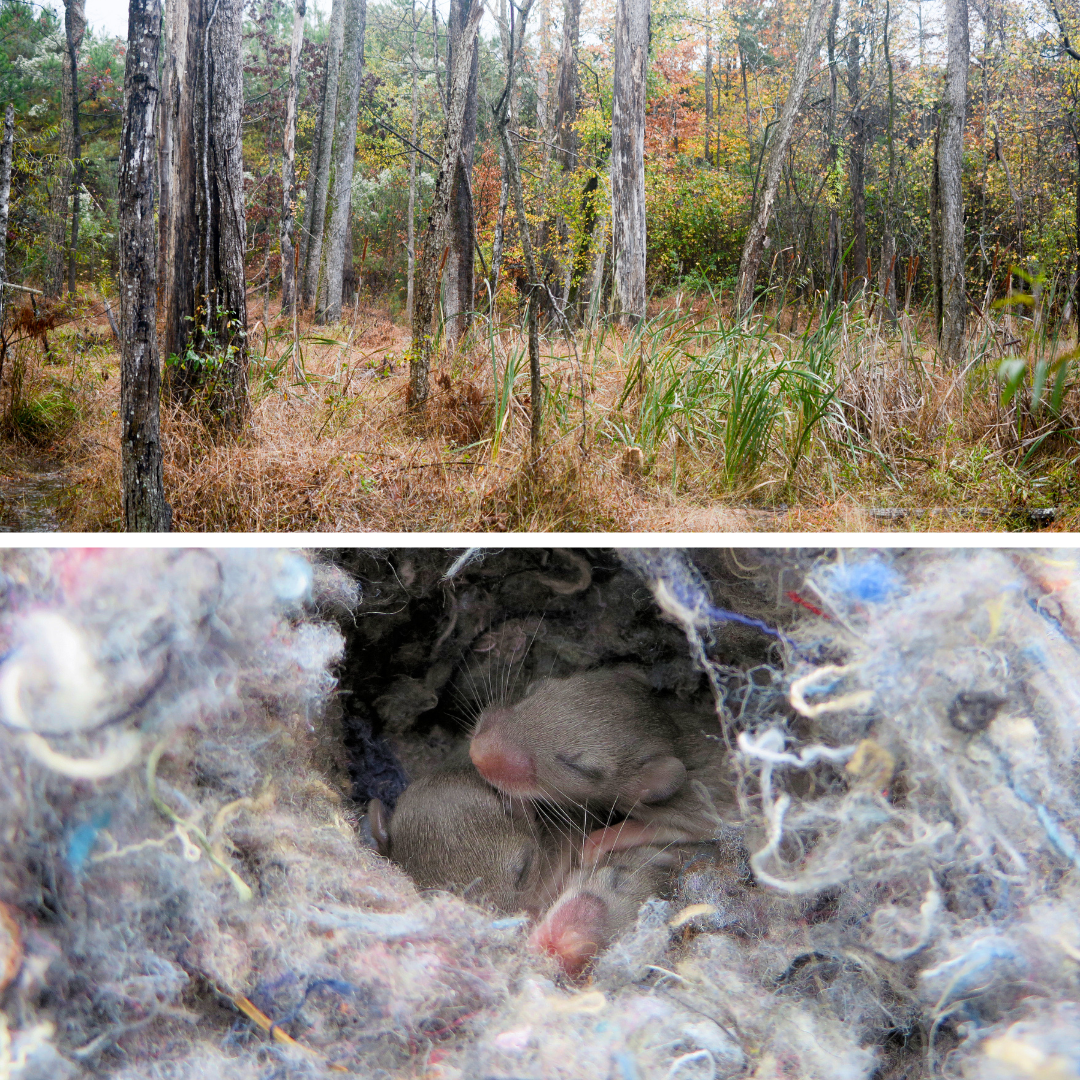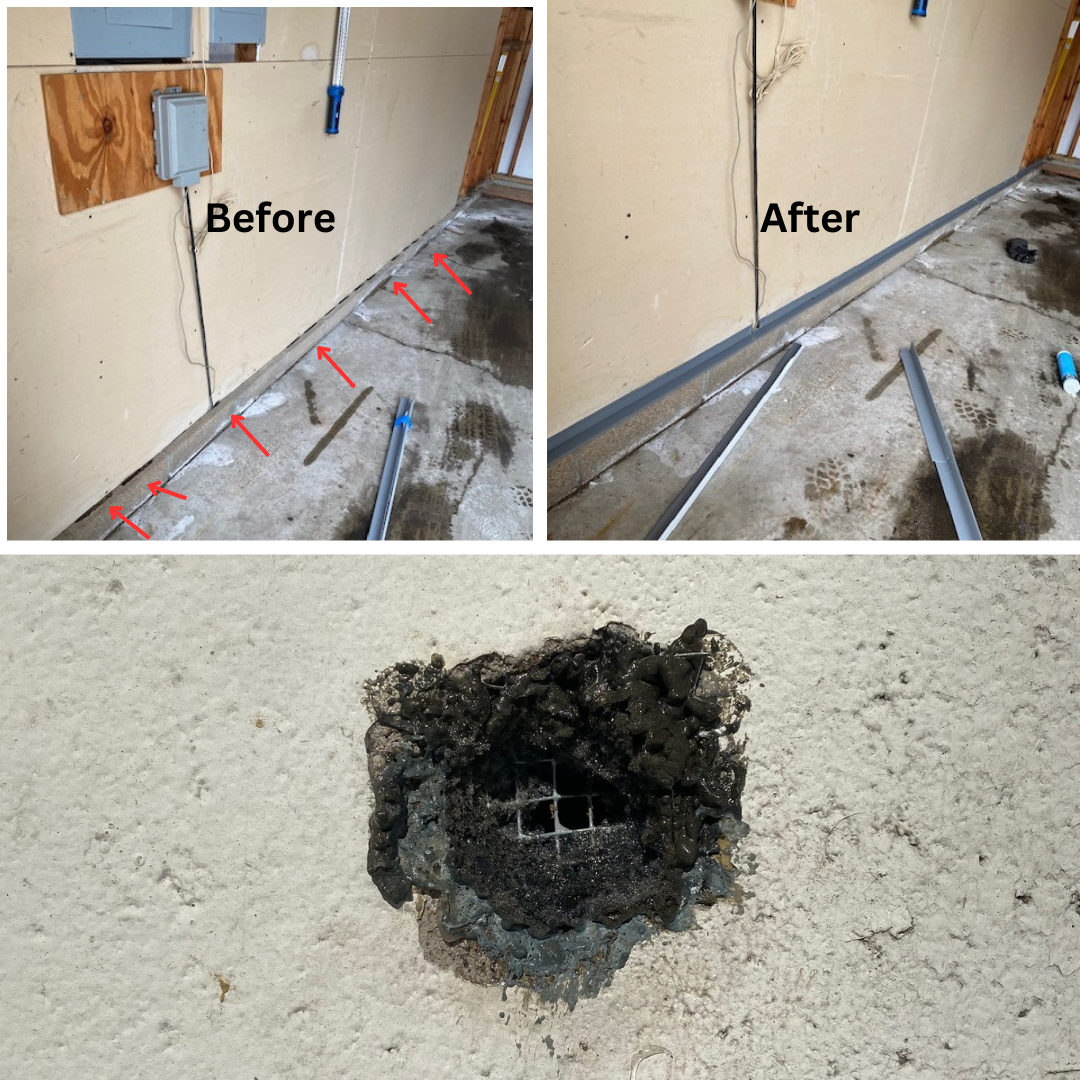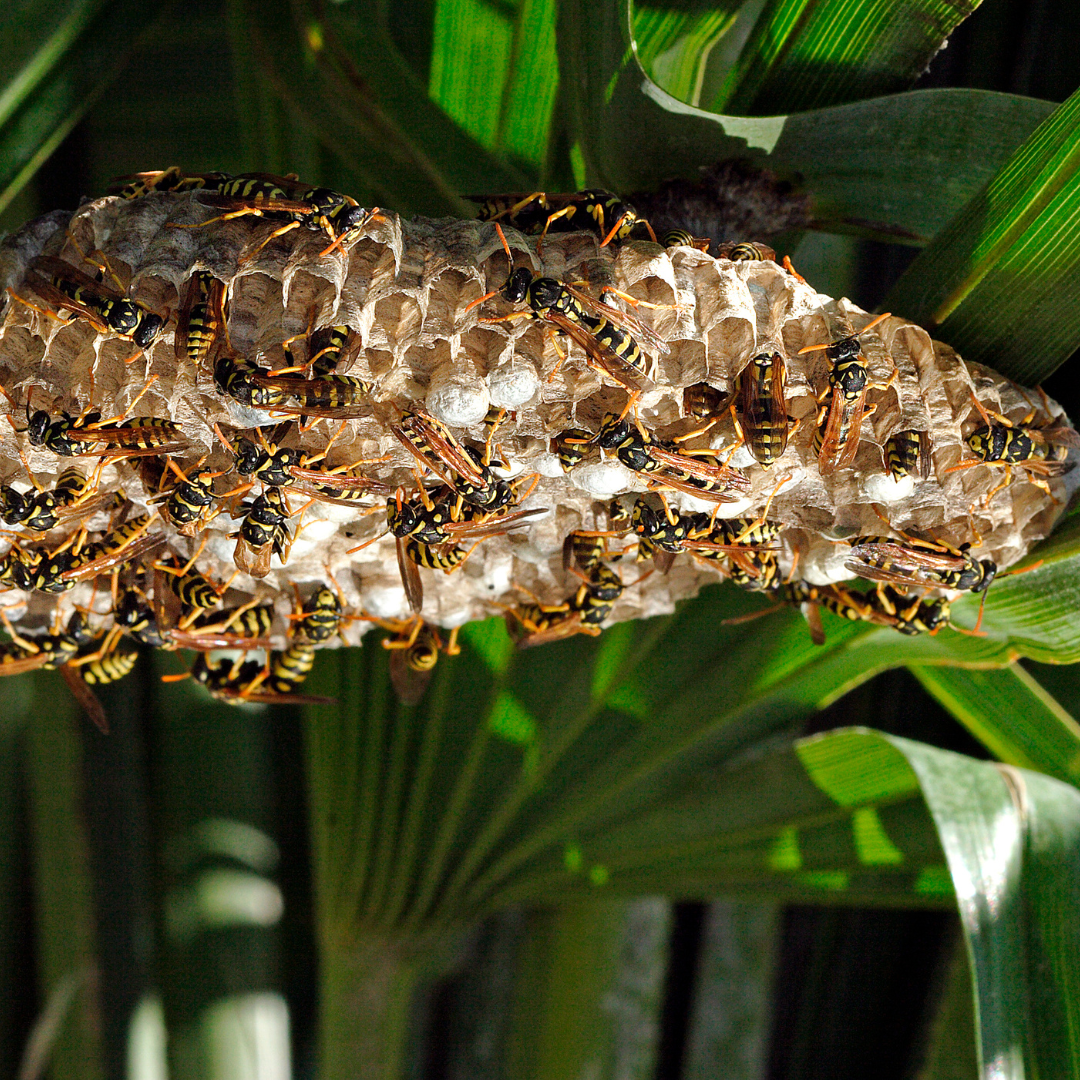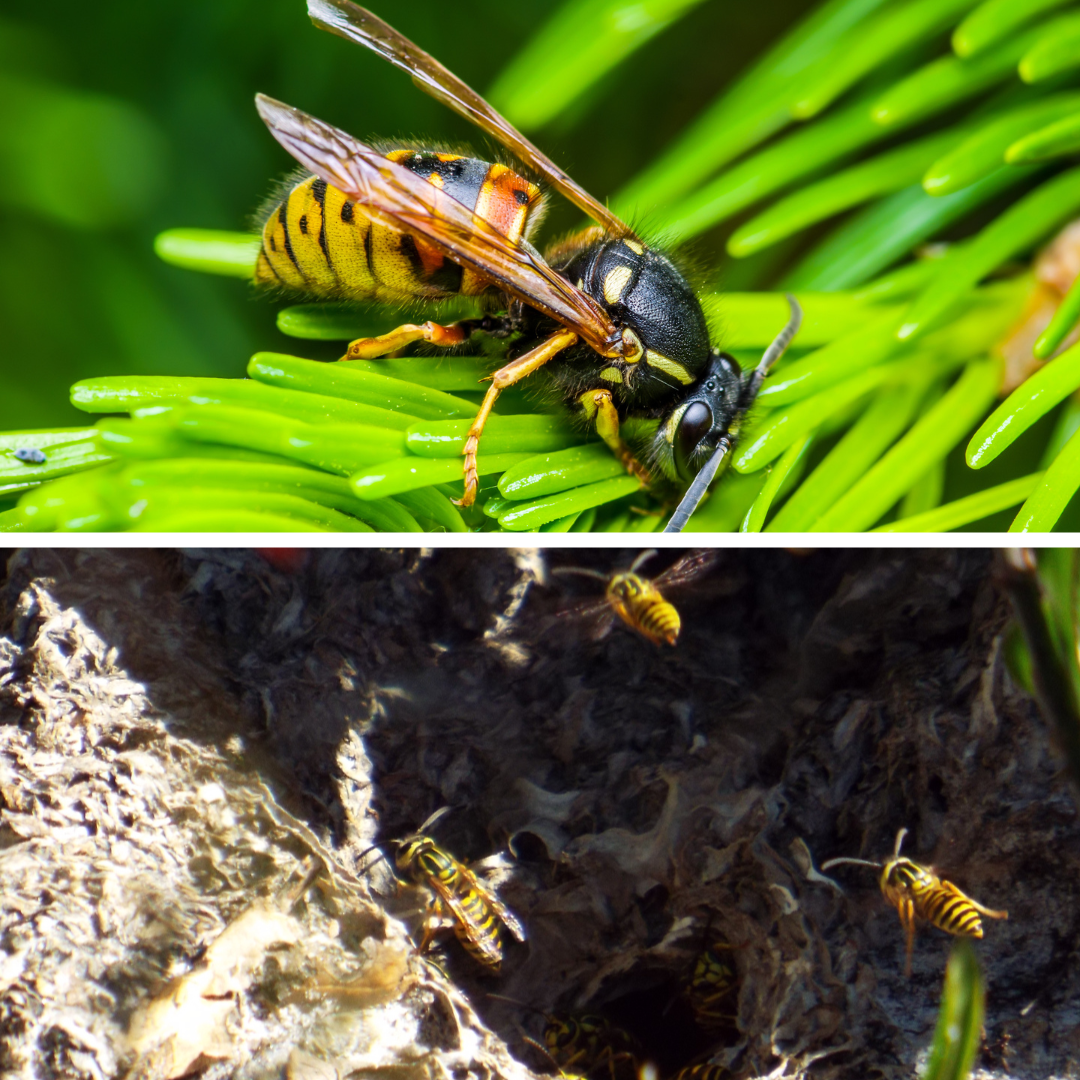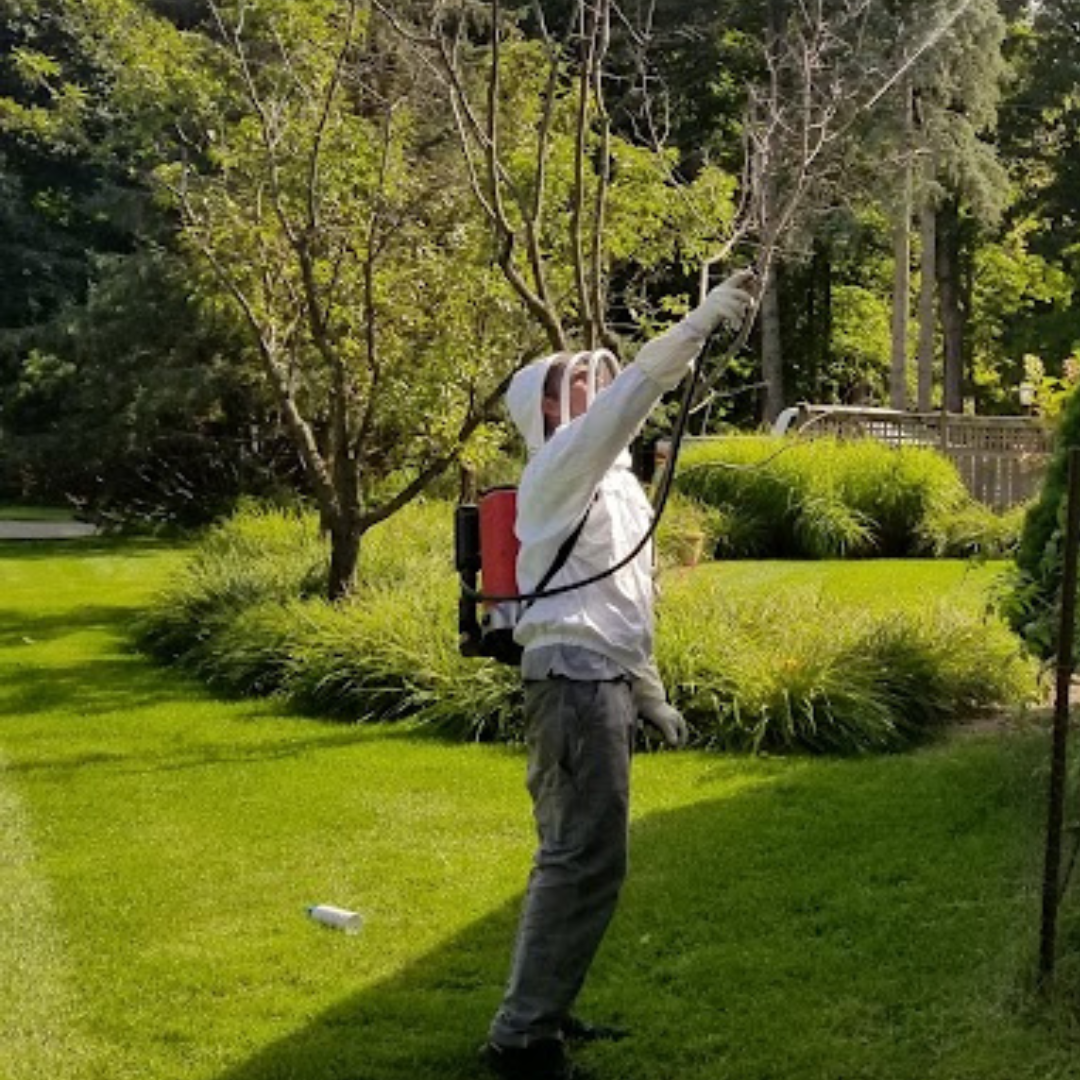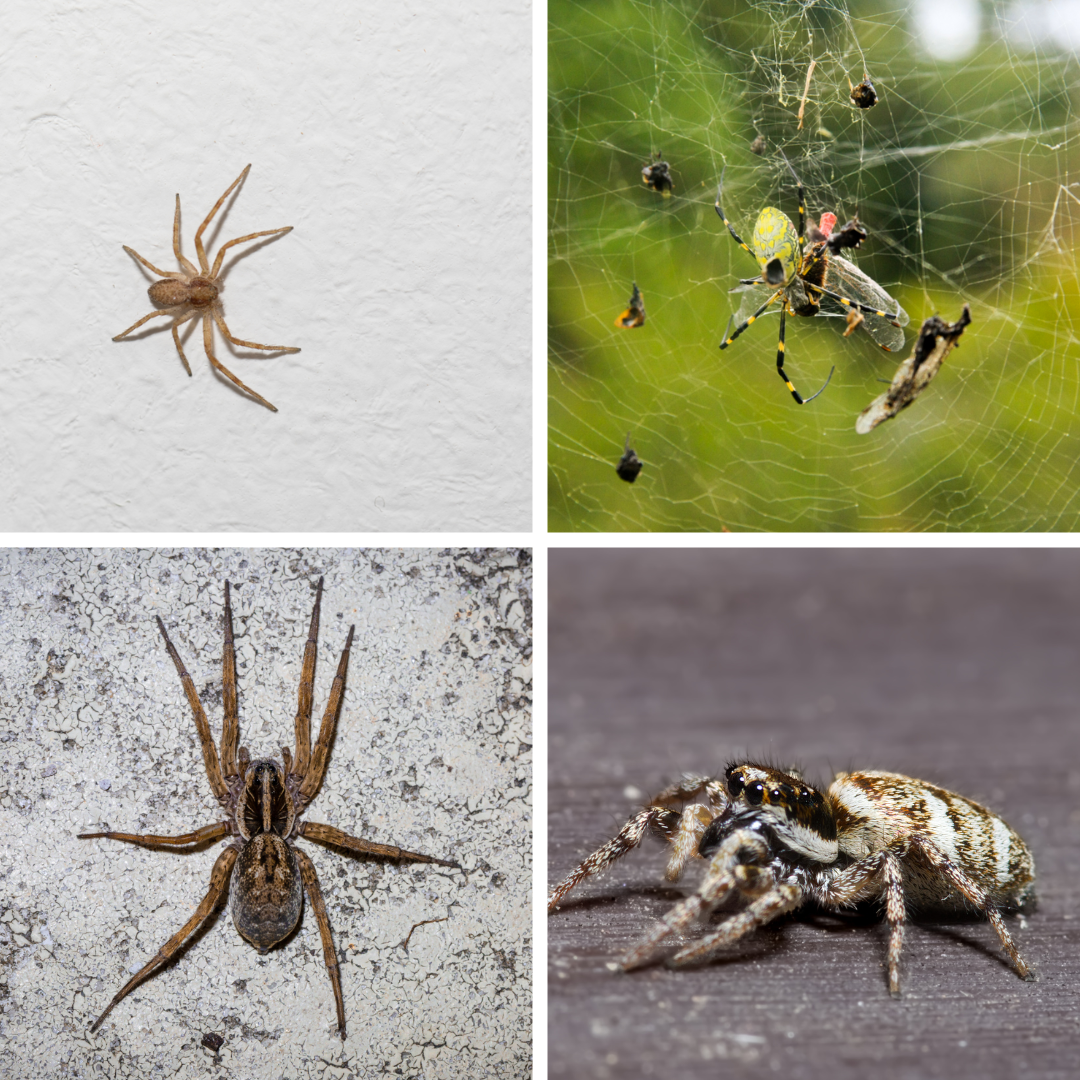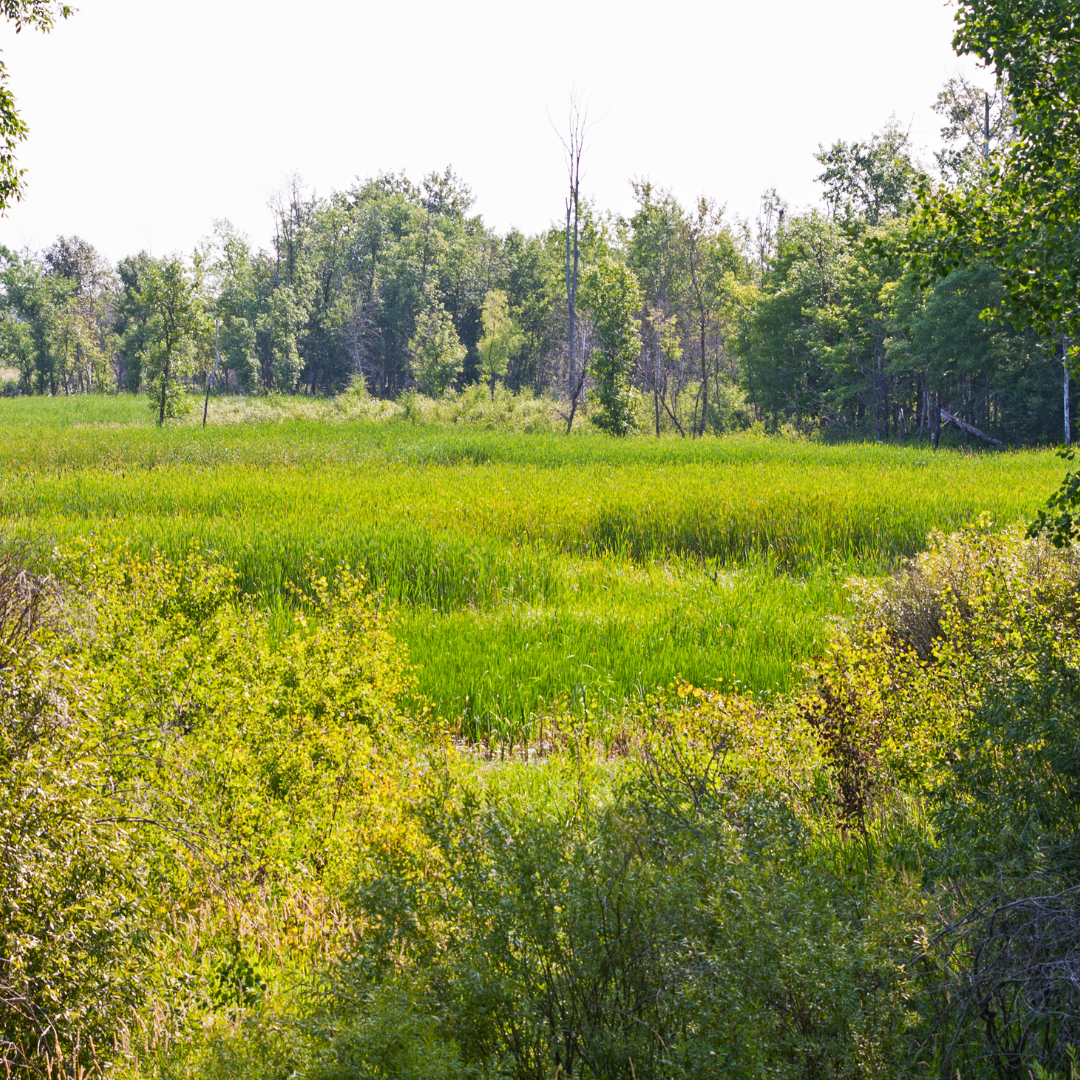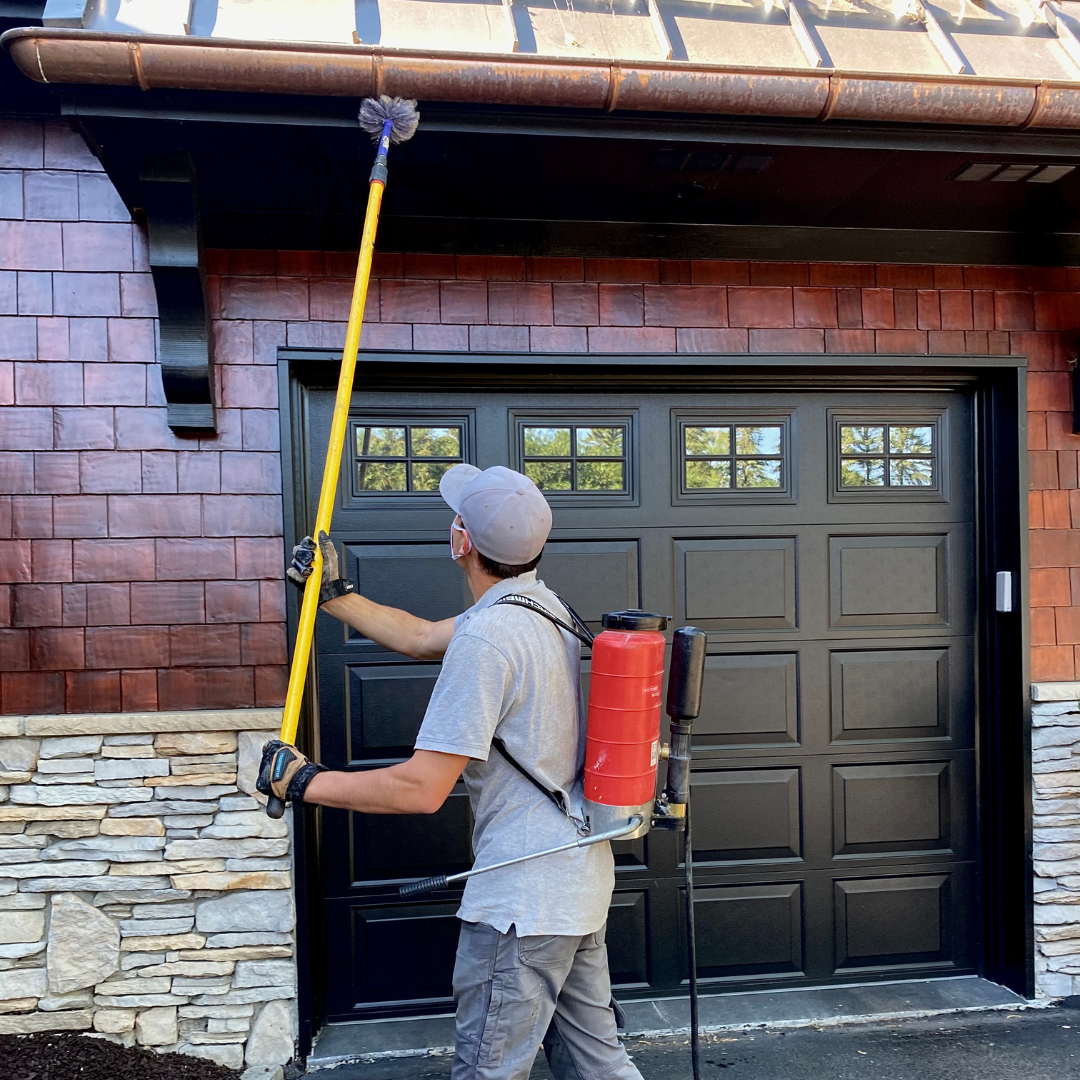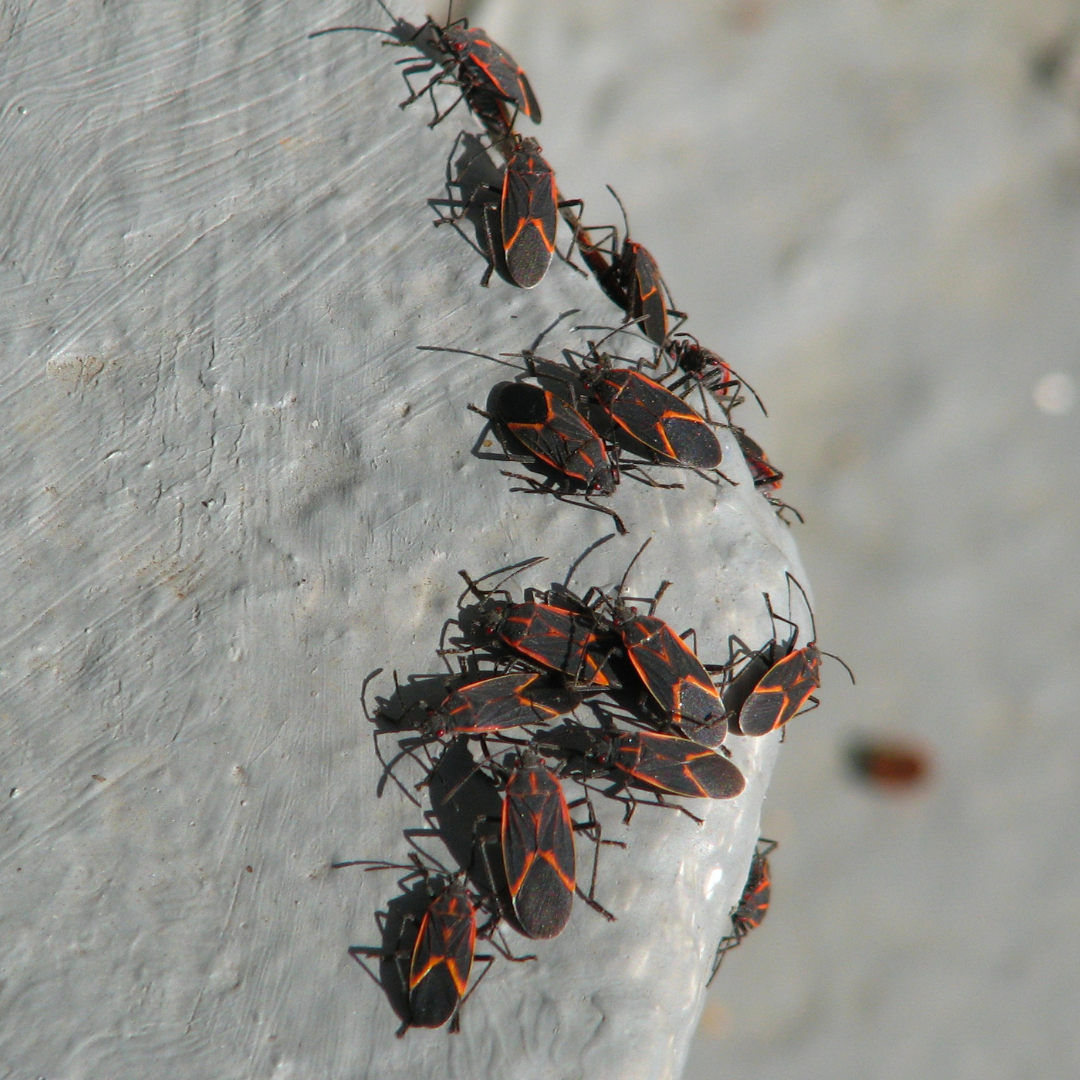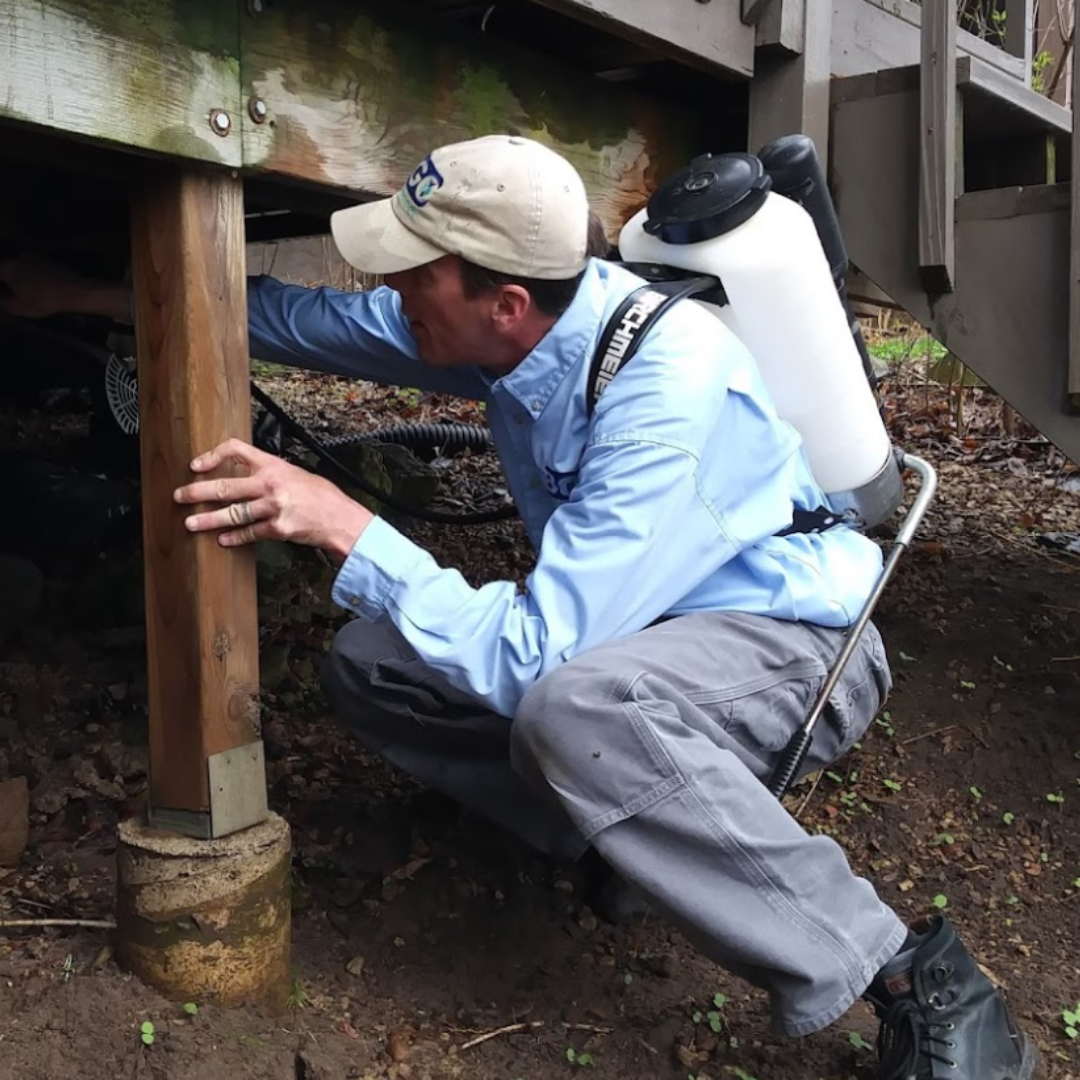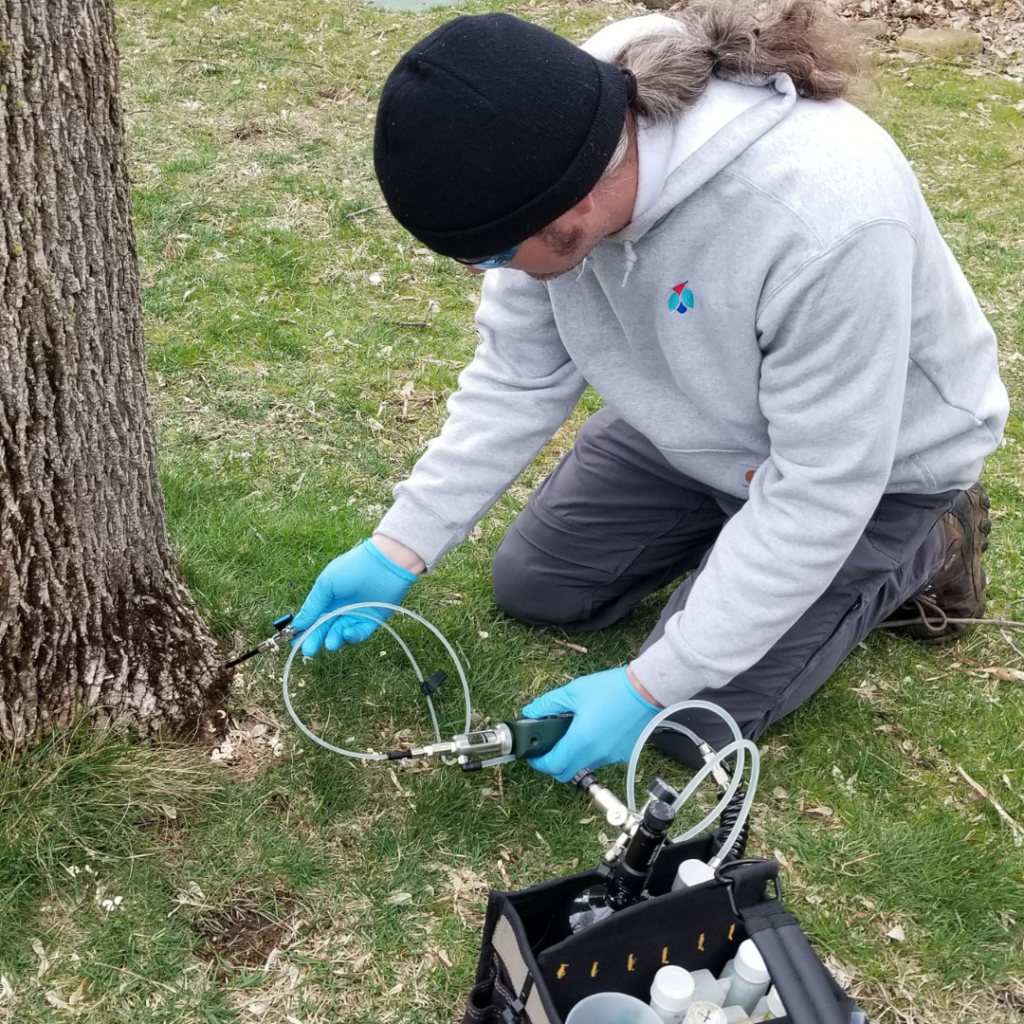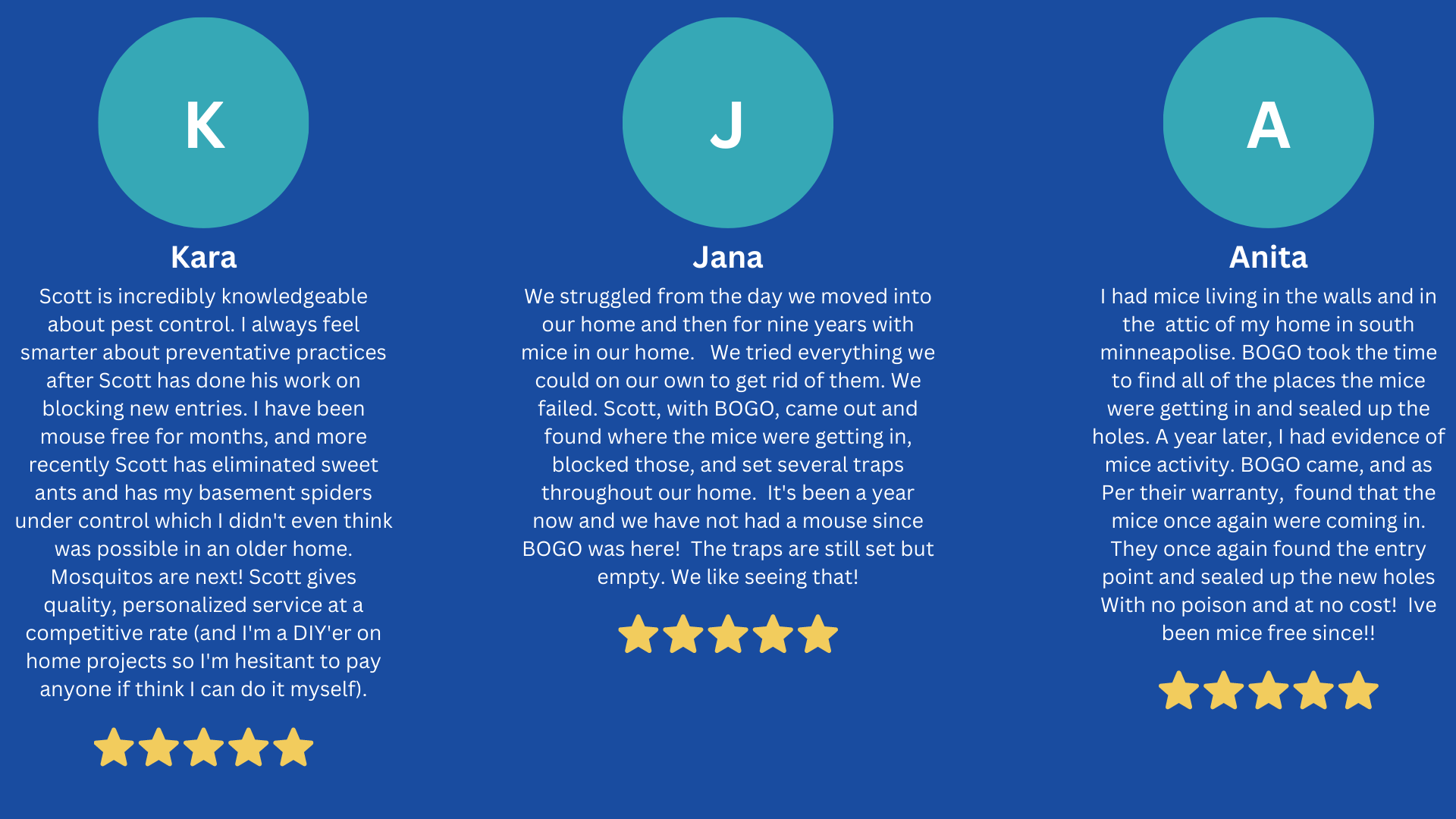Contact BOGO For Your Chanhassen Minnesota Pest Control Needs
Chanhassen Minnesota is a town Southwest of Minneapolis. It’s known for the University of Minnesota landscape arboretum as well as Paisley Park.
These are the most common pests found in Chanhassen Minnesota
(Click the name to keep from scrolling)
If you have any questions or concerns, or would like to schedule an appointment
Call Us Today! 952-404-BOGO (2646)
Share This Page!
Ants in Chanhassen Minnesota
Carpenter Ants
Carpenter ants are attracted to rotting water-damaged wood. They first find a location outside in a rotting tree or tree stump. The queen ant lives in the parent nest and raises her larva and pupa into worker ants. Over time the nest becomes overpopulated. They need a way to find more food to feed the colony. A group of worker ants will carry multiple eggs and larvae to another location. These nests are called satellite nests. They locate wood that with a specific amount of moisture that helps their larva grow into healthier worker ants. They often build them in homes with water leaks or rotting wooden decks.
Pavement Ants
Pavement ants forage for sugary or protein-based foods. Some examples include; pet food, nectar, insects, meat, fruits, and sugary human foods. They will travel 100 yards away from their nests to forage for food. They feed protein-based foods to their larva and pupa inside the nest. The sugary-based foods are eaten by the worker ants. Sugar gives them the energy to move around and stay warm in the winter. In the winter the nest stops raising larvae or pupa so protein foods aren’t necessary. Their nests are built under sidewalks, driveways, patios, and pavers. They are easy to locate as they have circular piles of sand and dirt around the entry point into the nest.
Ant Treatment
Our ant treatments vary on the season. We can’t spray outside in the winter because of the snow. The interior product is a foam that is put into cracks and crevices the ants are coming out of. When it dries up it is still effective towards ants but does not affect humans or pets. The foam is designed not to kill the ants right away. After we service a home there will still be ants roaming around. They are picking up the product and carrying it back to the rest of the colony. Once it’s inside the nest it spreads and gets on the rest of the ants. After 30 days the entire colony will be dead. when it’s warmer we spray the exterior. This treatment affects the ants living outside and inside.
Mice in Chanhassen Minnesota
Mouse Behavior
Mice live in habitats that provide them with food and protection. Habitats that are wooded and near water are where mice thrive during the spring and summer months. Trees provide mice with food from their seeds. They also provide them with protection from predators. Mice are great climbers and feel safer nesting off of the ground than on the ground. These adaptations also correlate when they move inside homes and buildings in the fall and winter. Inside homes, mice spend their time on top of the foundation, in between the floors, and inside the attic. They build tunnels and nests inside the insulation and foundation blocks. By staying warm they are capable of breeding and raising litters in the winter. One mouse can have 10 liters in one year.
Mouse Service
Our mouse service starts with an inspection of the outside of the home or building. We then take photos showing evidence of mice, entry points, and limitations. Limitations include areas around the house that are blocking us from sealing 100% of the home. Some limitations include low decks, cedar shakes, and low 3-season porches. We are 100% honest with all of our customers regarding how severe their mouse problem is. Some are an easy fix and some can take multiple visits before the entire house is sealed. Our seal-ups are effective because we don’t rush through them and are particular with the materials we use. Our amazing full 2-year warranty is proof that we stand behind our work. Our warranty provides our customers with unlimited callbacks if they continue getting mice 30 days after we sealed their home.
Wasps in Chanhassen Minnesota
Paper Wasps
Paper wasps have the nickname the umbrella wasp based on their unique nests. Their nests are flat and circular or oval-shaped just like an umbrella. Their nests are also unique in that the hexagonal cells are visible from the outside. These cells are made out of a papery material that the wasps forage for by chewing on dried-up wood. Homes with wooden decks or wooden shingles will see an increase in wasp activity. The wasps will land on the wood and chew a thin layer off it. After chewing they mix it with their saliva to create the papery material their nests are made of. Every nest is built from scratch in the spring. One nest at the end of the summer can have between 30-70 workers.
Yellow Jackets
Yellow Jackets are the most aggressive wasp in Minnesota. They’re smaller than their cousins the paper wasps who are 0.75-1.0 inches long. Yellow jackets measure only 3/8-5/8 inches long. They make up for their small size by the size of their colonies. One wasp colony can have 1,000-4,000 workers. Every nest is built from scratch each spring. Some yellow jackets build nests in the ground, inside cracks in buildings and homes, and some build aerial nests. These nests can be hard to find and often catch people off guard. Yellow jackets don’t die or lose their stingers after stinging someone.
Wasp Service
Our wasp service is to prevent wasps from building nests in a home or building. We also offer one wasp service to eradicate wasp nests. The product we use to exterminate a nest is only available to professional pest technicians. The wasp that gets the product on them doesn’t die instantly. Instead, the one wasp can carry it back inside the nest and spread across the rest of the colony. After 12 hours each wasp will die. It can take 30 days to completely eradicate a wasp nest. When we service homes to prevent wasps from building nests we use a different product. That product is designed to kill the wasps instantly. When applied on the exterior of the home the product stays effective for 2 months.
Spiders in Chanhassen Minnesota
Spider Behavior
Spiders serve an important role in our earth’s ecosystems. All spiders live off of eating insects. By eating insects they help keep their populations from being overpopulated. Many insects carry diseases that affect animals and plants. Some of the most common insects that spiders eat in Minnesota are mosquitos, ticks, flies, and moths. There are 2 kinds of spiders that live in Minnesota. There are web-building spiders and hunting spiders. Web-building spiders use their webs to catch their prey. Some common web-building spiders are the common house spider (top left) and garden spider (top right). Hunting spiders are spiders that move around to catch their prey. Some common hunting spiders are; the wolf spider (bottom left) and jumping spiders (bottom right).
Spider Habitat
Spiders live in areas that provide them with an abundance of food. The most common insects that spiders eat are; mosquitos, ticks, moths, and flies. All of these insects thrive in habitats that are near bodies of water. When spiders are found inside homes they also will be drawn to homes with an abundance of insects. Homes that have spiders have insects that live inside. Having leaf litter or long grass touching the house will also attract insects to get inside. When insects get inside spiders are likely to follow.
Spider Service
Our spider service is focused on the exterior of the home. The service starts by knocking down the spider webs that are outside of the house. Most webs have small egg sacs inside them. Each egg sac can hold hundreds of baby spiders. Knocking down the webs forces the spiders to become more active. As they move around they are more likely to hatch and adults are more likely to move across our product. After we spray the exterior of the home the product stays effective for 2 months. Homes that are close to a body of water or a wooded habitat may need multiple services. Having multiple services will help keep any new spiders from moving back into the home.
Read Our Blog “We Love Living Near Woods and Water and So do Spiders!”
Boxelder Bugs and Stink Bugs in Chanhassen Minnesota
Boxelder Bugs
Boxelder bug’s mating season starts in the spring and goes until mid-summer. In the spring they start feeding right away. They eat grass until the trees start producing seeds and fruits. Their favorite food comes from female boxelder trees. These trees produce helicopter seeds that the nymphs and adult boxelder bugs eat. The trees are where they mate and lay their eggs. They lay them on the trunk, branches, and leaves. When the temperatures start dropping in the fall the bugs start flying toward buildings and homes to look for areas to overwinter. In the winter they can be seen roaming around inside. They can wake from hibernation during sunny days in the winter. They do not breed or lay eggs in the winter.
Stink Bugs
The mating season for stink bugs starts in the early spring. They start laying their eggs in May and June. They lay their eggs on various plants. Most of the plants they lay eggs on are plants that produce some type of fruit or vegetable. The foods they eat are; tomatoes, sweet corn, apples, and grapes. In the fall stink bugs fly to buildings and homes to overwinter inside. They enter homes through soffits, chimneys, and vents. While they are overwintering they don’t breed or lay eggs. Like boxelder bugs, they also wake up on sunny days in the winter.
Boxelder and Stink Bug Service
The boxelder bug and stink bug service is applied at the same time and applied in the fall. This service is done exclusively on the exterior of the home. When we spray the exterior we attempt to cover the entire home with our product. Both bugs fly and stink bugs in particular prefer entering into attics and chimneys. This makes it difficult to know where all the entry points are located. So the next best option is to cover the home with our product. The best time to apply is right before the swarms of these bugs become visible. Once the insects are seen on the exterior of the home there is most likely already a population of insects living inside. Once the insects are seen inside spraying in the interior is not effective in killing them. The best way to get rid of them is by vacuuming them up.
Read Our Blog “Minnesota Fall Pests“
Ash Tree Service in Chanhassen Minnesota
Benefits of Treating your Ash Trees
Ash trees in Chanhassen Minnesota are becoming infected from the emerald ash borer. Even though the trees are infected they don’t need to be cut down right away. There are multiple benefits to treating your ash trees instead of cutting them down. A few of the most important is the health and environmental benefits. Large, well-established trees benefit people by lowering blood pressure, reducing stress, and improving people’s mood. The environmental impact they provide is already well-known. One well-established ash tree can absorb 1,000 pounds of carbon dioxide from the atmosphere per year! Their leaves also remove nitrogen oxides, sulfur dioxides, and carbon monoxide.
Ash Tree Service
Our ash tree service uses pneumatic micro-injections. During the service, multiple injection points are drilled around the trunk of the tree. Each injection point is individually treated so that the same amount of products is injected into each hole. This may make the service take a little longer than other options. Since each injection point is treated individually it makes the service the most effective option.
BOGO Provides Pest Control Services For the Twin Cities and Beyond!
Anoka|Apple Valley| Bloomington|Burnsville|Champlin|Chanhassen|Coon Rapids|Cottage Grove|Deephaven| Delano|Eagan|Eden Prairie|Edina|Elk River|Excelsior|Golden Valley|Independence|Inver Grove Heights| Lino Lakes|Long Lake|Maple Grove|Maple Plain|Maplewood|Medina|Minneapolis| Minnetonka|Minnetrista|Mound|New Brighton|New Hope|North Oaks|Orono|Prior Lake|Plymouth|Ramsey|Rogers|Roseville|Shoreview| Shorewood|Stillwater|St. Louis Park|St. Paul|Victoria|Waconia|Wayzata|White Bear Lake|Woodbury|
If you have any questions or concerns, or would like to schedule an appointment
Call Us Today! 952-404-BOGO (2646)



